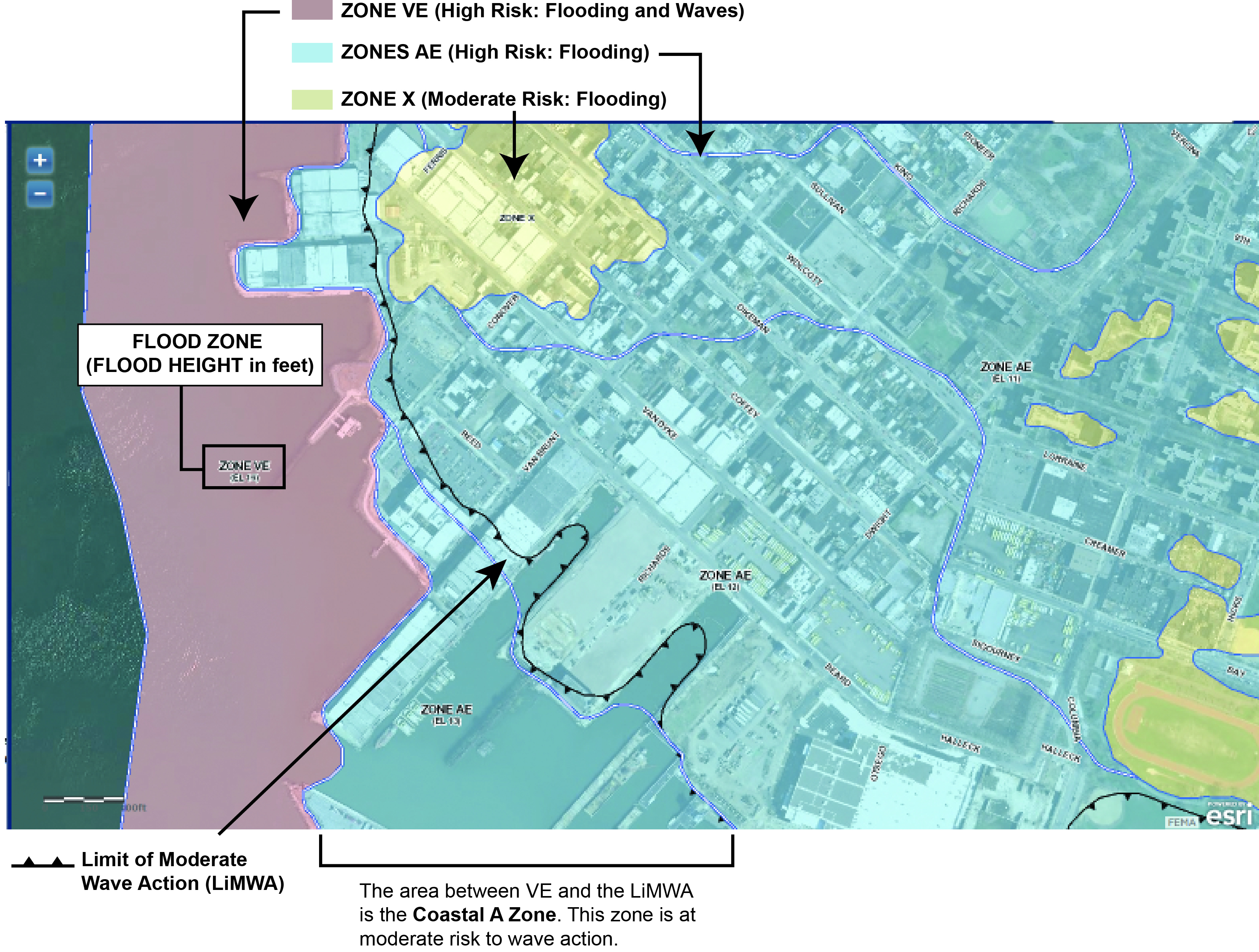
 Flood Maps311
Flood Maps311 Search all NYC.gov websites
Search all NYC.gov websites
Understanding the Maps
How to Read a Flood Map

It is important to understand how to interpret the flood maps to better understand your risk. These maps identify areas that are at risk to flooding. Areas with a high flooding risk are identified as being in the 100-year floodplain, and areas with a moderate flooding risk are identified as the 500-year floodplain.
Within the floodplains shown on the Flood Insurance Rate Maps (FIRMs) for New York City, there are five zones. These zones range from high- to moderate-risk areas: VE, AE, AO, A, and X. While the flood zones identify the extent of flood risk, the Base Flood Elevation identifies the expect height that flood waters are expected to reach in a high risk area. On a map, it may read: AE13, which means the structure is in the AE flood zone with a BFE of 13. The Base Flood Elevations are denoted in the datum NAVD 88, which represents the number of feet above mean sea level in that datum. To get the expected flood height above ground, you would need to subtract your ground elevation from the base flood elevation.
Read more about the flood risk data in the Flood Insurance Study (FIS) and the Coastal Flood Hazard Mapping Fact Sheet
More information is provided in our glossary

